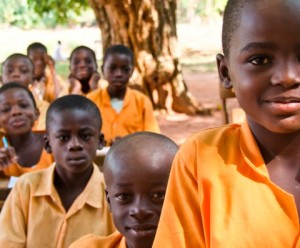No sub-Sahara African country has gender equality in primary, secondary education – UNESCO
 No country in sub-Saharan Africa has achieved gender parity in both primary and secondary education enrolment, according to UNESCO’s “Education For All” Global Monitoring Report compiled for International Day of the Girl Child.
No country in sub-Saharan Africa has achieved gender parity in both primary and secondary education enrolment, according to UNESCO’s “Education For All” Global Monitoring Report compiled for International Day of the Girl Child.
The report released jointly with the United Nations’ Girls’ Education Initiative, a copy of which was emailed to ghanabusinessnews.com, says there are still only 92 girls per 100 boys in primary school in sub-Saharan Africa, and 9.3 million out of 16.7 million girls in the region who are not in school, “will never set foot in a classroom.”
UNESCO says going by current trends in sub-Saharan Africa, “the poorest girls will achieve universal primary completion twenty years after the poorest boys.”
It says that two-thirds of adults who lack basic literacy skills are women, and half of adult women in sub-Saharan Africa along with South and West Asia, cannot read or write.
“In Guinea and Niger, approximately 70 per cent of the poorest girls had never attended school compared with less than 20 per cent of the richest boys.”
Chad is said to be the country with the greatest inequity remaining in primary and lower secondary education.
Irina Bokova, the Director-General of UNESCO said: “Educating a girl educates a nation. It unleashes a ripple effect that changes the world unmistakably for the better. We have recently set ourselves a new ambitious agenda to achieve a sustainable future. Success in this endeavour is simply not possible without educated, empowered girls, young women and mothers.”
The report notes the persistence of child marriages and early pregnancy as a barrier to girls’ education and a key driver of dropout among female secondary students in sub-Saharan Africa. The prevalence of premarital sex before age 18 increased in 19 out of 27 countries in the region between 1994 and 2004.
“If existing laws on age of marriage were enforced, this would result in an overall 39% increase in years of schooling in sub-Saharan Africa”, UNESCO says.
Despite policies forbidding the exclusion of pregnant girls and some allowing the re-admission of girls after childbirth, the report says uptake is often limited and those who return to school often face negative attitudes and practices from teachers and peers.
Sub-Saharan Africa is also in want with regards to the proportion of female teachers which UNESCO regards as an important indicator of progress towards gender equality.
As at 2012, women made up 43 per cent of teachers in sub Saharan Africa at the primary level and only 31 per cent at the secondary teachers, or in very severe cases such as Chad, Guinea, Central African Republic, and Mali, less than 12 per cent, denying adolescent girls important role models.
To surmount the challenges, UNESCO recommends that education should be made free and alternative secondary education options should be provided for out-of-school adolescents.
It also recommends that governments should recruit, train and support teachers effectively, integrate gender-sensitive curricula and practices into education and gender issues into “all aspects of policy and planning.
By Emmanuel Odonkor
